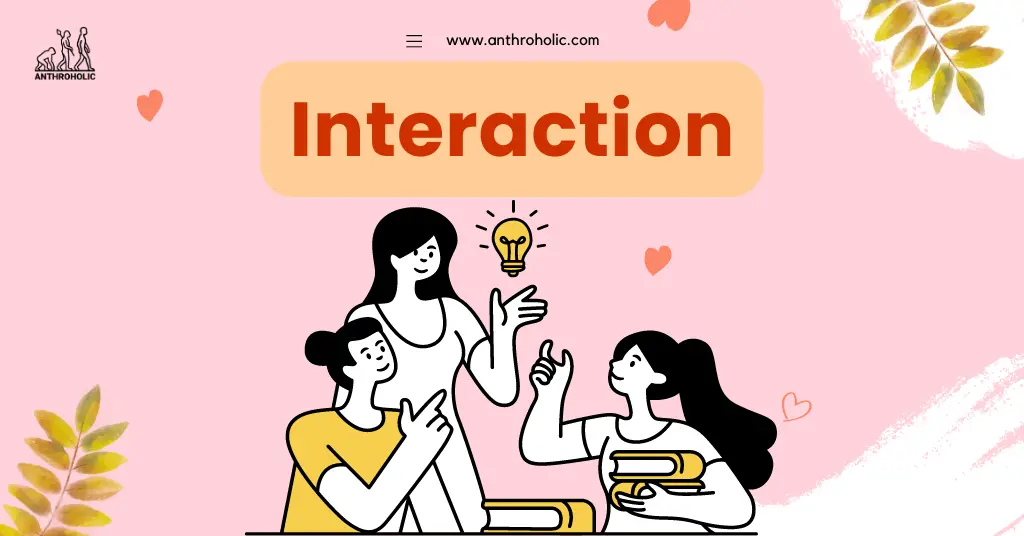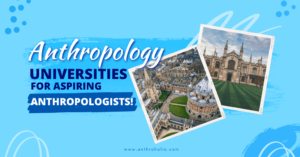AI Answer Evaluation Platform Live Now. Try Free Answer Evaluation Now
Interaction
Interaction, as a fundamental aspect of human behavior, has been a subject of interest in anthropology for decades. It’s the essence of society’s fabric, maintaining its integrity and enabling continuous evolution [1].

Forms of Interaction
Interaction takes several forms, each with a unique significance and impact on society. Broadly, they are:
- Verbal Interaction: This includes spoken conversations, stories, lectures, or any form of communication that involves language. It is the most direct form of interaction [2].
- Non-verbal Interaction: This involves gestures, body language, facial expressions, etc. While not as overt as verbal interaction, it conveys subtle yet potent messages [3].
- Virtual Interaction: This has been an increasing mode of communication in recent years, courtesy of digital technology. It encompasses emails, social media, video calls, etc. [4].
The Cultural Dimension of Interaction
The anthropological study of interaction is not complete without considering the influence of culture. Culture shapes interaction norms, dictating what is acceptable or offensive.
| Culture | Interaction Norms |
|---|---|
| Western | More direct and assertive communication. |
| Eastern | Respectful and deferential interaction, valuing harmony. |
| African | Communalism and group consensus emphasized. |
Cultural norms guide how interactions are structured, how messages are delivered, and how feedback is received [5].
Interaction and Socialization
Interaction plays a crucial role in the socialization process. Through interaction:
- Individuals learn their society’s rules and expectations.
- Cultures are transferred from one generation to another.
- Individuals are integrated into the social and cultural fabric [6].
Interaction thus not only shapes individuals but also preserves cultural heritage and strengthens societal structures.
Impact of Interaction on Individual Identity
Interactions significantly contribute to the formation and evolution of individual identity. People are social creatures, and our interactions with others shape our self-perception, beliefs, attitudes, and behaviors [7].
Interaction and Power Dynamics
Interaction is not a neutral process. It’s influenced by existing power dynamics within a society, with those in power often dictating the terms of interaction [8]. These dynamics may be influenced by factors such as:
- Gender
- Age
- Socioeconomic status
- Race
- Ethnicity
An understanding of these dynamics helps to critically evaluate interaction patterns and their implications for social equality or inequality.
Interaction in the Digital Age
The digital age has transformed interaction. Virtual interaction is now common and brings both opportunities and challenges. It transcends geographical boundaries and allows for real-time communication between individuals across the globe. However, it also poses threats like misinformation and digital divide [9].
Interactions in Rituals and Ceremonies
Rituals and ceremonies are a vital part of human culture, often involving complex patterns of interaction. These patterns are largely symbolic, carrying cultural meanings and values that transcend the individual and link him or her to the collective. In addition to building social bonds, rituals and ceremonies also serve to reinforce cultural norms and values [10].
Interaction as a Means of Conflict Resolution
Anthropologists also study interactions as a means of conflict resolution. Within every society, disputes are inevitable, and the processes for resolving these disputes often involve intricate interactions, such as negotiation, mediation, and arbitration. The manner in which conflicts are resolved can offer significant insights into the underlying values and power structures within a society [11].
Technological Influence on Interaction
Advances in technology have transformed our modes of interaction. As communication technologies evolve, the boundaries of what constitutes interaction are continually being pushed. Consider the following developments:
- Social media platforms: They have created virtual spaces where people can interact in real time, despite geographical distances [4].
- Virtual Reality (VR): It provides an immersive experience, enabling novel forms of interaction [12].
- Artificial Intelligence (AI): AI-powered chatbots and personal assistants are becoming an increasingly prevalent form of interaction [13].
Each of these technological innovations brings new dimensions to human interaction, influencing how we communicate, share information, and build relationships.
Anthropology and the Future of Interaction
As our societies continue to evolve, so too will our modes of interaction. Anthropology, as the study of human societies and cultures, will play a crucial role in helping us understand these changes. By studying interactions, anthropologists can gain insights into the shifting dynamics of power, identity, and social norms [14].
Conclusion
Interaction is a multifaceted concept with significant anthropological implications. It not only maintains societal structures but also influences individual identities, reflects cultural norms, and reveals power dynamics. As the digital age redefines traditional interaction patterns, the anthropological study of interaction continues to evolve, offering fascinating insights into the complex tapestry of human societies.
References
[1] Durkheim, E. (1893). “The Division of Labour in Society.” Free Press.
[2] Sapir, E. (1921). “Language: An Introduction to the Study of Speech.” Harcourt, Brace.
[3] Birdwhistell, R. (1970). “Kinesics and Context: Essays on Body Motion Communication.” University of Pennsylvania Press.
[4] Turkle, S. (2011). “Alone Together: Why We Expect More from Technology and Less from Each Other.” Basic Books.
[5] Hall, E. T. (1976). “Beyond Culture.” Anchor Press.
[6] Vygotsky, L. S. (1978). “Mind in Society: The Development of Higher Psychological Processes.” Harvard University Press.
[7] Goffman, E. (1959). “The Presentation of Self in Everyday Life.” Anchor.
[8] Foucault, M. (1977). “Discipline and Punish: The Birth of the Prison.” Vintage.
[9] Castells, M. (2000). “The Rise of the Network Society.” Wiley-Blackwell.
[10] Turner, V. (1969). “The Ritual Process: Structure and Anti-Structure.” Aldine Transaction.
[11] Bercovitch, J., Kremenyuk, V., & Zartman, I. W. (2008). “The SAGE Handbook of Conflict Resolution.” SAGE Publications.
[12] Bailenson, J. (2018). “Experience on Demand: What Virtual Reality Is, How It Works, and What It Can Do.” W. W. Norton & Company.
[13] McTear, M., Callejas, Z., & Griol, D. (2016). “The Conversational Interface: Talking to Smart Devices.” Springer.
[14] Kottak, C. P. (2017). “Anthropology: Appreciating Human Diversity.” McGraw-Hill Education.




